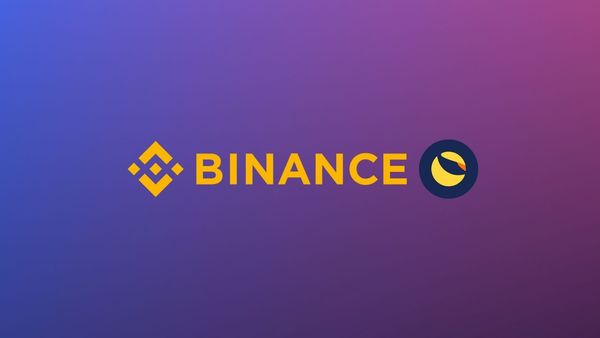Crypto 101: what is staking crypto?

Introduction
Staking is a concept that has emerged in the blockchain industry, primarily in the context of proof of stake (PoS) consensus mechanisms. It involves the holding of a cryptocurrency in a wallet or an address for a specified period to support the security and functioning of the blockchain network. In return, the staker earns rewards in the form of additional coins or tokens. Staking has gained significant attention from investors and traders as an alternative to traditional mining, which is energy-intensive and requires expensive hardware. In this report, we will discuss what staking is and how it works in detail.
What is Staking crypto?
Staking refers to the act of holding cryptocurrency tokens in a wallet or an address to support the functioning and security of a blockchain network. In the PoS consensus mechanism, the network validators or nodes are selected based on the number of tokens they hold or stake in the network. The more tokens a node stakes, the higher the chances of being selected as a validator to confirm transactions and add blocks to the blockchain. Validators are also responsible for checking the validity of transactions and preventing malicious activities on the network.
In contrast to the proof of work (PoW) consensus mechanism used by Bitcoin, PoS eliminates the need for expensive hardware and energy-intensive mining activities. Instead, validators are selected based on their stake or investment in the network. This makes staking a more energy-efficient and cost-effective way of earning rewards from the blockchain network.
How Staking Works?
Crypto staking works differently on different blockchain networks, but the basic principle remains the same. To stake, users need to hold a minimum amount of tokens in a designated wallet or address, which is also known as a validator node. This wallet must be online and connected to the internet 24/7 to participate in the staking process.
The amount of tokens required to stake varies depending on the network and the value of the token. For example, the minimum requirement to stake on the Ethereum 2.0 network is 32 ETH, which is equivalent to approximately $60,000 at the time of writing.
Validators are selected randomly based on their stake and the network's algorithm. The more tokens a user stakes, the higher the probability of being selected as a validator. Once selected, the validator is responsible for validating transactions, adding blocks to the blockchain, and preventing malicious activities on the network.
In return for their services, validators earn rewards in the form of additional coins or tokens. The reward amount varies depending on the network, the token's value, and the amount staked. For example, on the Ethereum 2.0 network, validators can earn up to 5% annually on their staked tokens.
Validators are also penalized for any malicious activities or network downtime. For example, if a validator fails to validate transactions or goes offline, they may lose a portion of their stake or face other penalties. This incentivizes validators to maintain the network's security and uptime.
What is crypto staking pool and how does it work?
A staking pool is a group of cryptocurrency holders who combine their staking resources to increase their chances of earning rewards in a more predictable and consistent manner.
Breakdown of how staking pools work:
- Participants pool their resources: Staking pools are formed when a group of cryptocurrency holders pool their staking resources together.
- The pool stakes the cryptocurrency: Once the pool has gathered enough resources, it can then stake the cryptocurrency on the chosen blockchain network.
- Rewards are earned and distributed: As the pool participates in staking, it earns rewards in the form of additional cryptocurrency.
- Fees are deducted: Most staking pools charge a fee for their services, which is typically deducted from the rewards earned by the pool.
- Participants can withdraw their cryptocurrency: Participants in the staking pool can typically withdraw their staked cryptocurrency and rewards at any time, subject to any lockup periods or withdrawal fees imposed by the pool.
Benefits of Staking crypto
Staking offers several benefits to investors and traders, including:
- Passive income: Staking allows users to earn passive income by holding tokens in a wallet or address. This eliminates the need for expensive hardware and energy-intensive mining activities, making it a more cost-effective and energy-efficient way of earning rewards.
- Network security: Staking helps to ensure the security and integrity of the blockchain network. Validators are incentivized to prevent malicious activities and validate transactions accurately, ensuring the network's trustworthiness.
- Liquidity: Staking provides a way for users to earn rewards while still holding onto their tokens. This means that users can earn rewards while maintaining the liquidity of their holdings, unlike mining, which requires users to lock up their tokens.
- Price appreciation: Staking can also lead to price appreciation for the token. As more users
How new blocks are created using staking crypto
In a proof-of-stake blockchain, new blocks are typically created through a process called "staking."
In a PoS blockchain, validators are chosen to create new blocks based on their stake in the network. The more cryptocurrency a validator holds, the higher their chances of being chosen to create a new block. Once a validator has been chosen to create a new block, they assemble a list of valid transactions and create a new block. Before the block can be added to the blockchain, it must be validated by other validators in the network. Validators review the new block to ensure that it follows the blockchain's rules and that the transactions within the block are valid. When a sufficient number of validators have validated the block, it is added to the blockchain and becomes part of the permanent record of transactions. Validators who participate in the block validation process are typically rewarded with a portion of the blockchain's native cryptocurrency. This incentivizes validators to act in the best interest of the network and ensures the security of the blockchain.
Is staking crypto safe?
Staking cryptocurrency is generally considered safe, but like any investment, there are potential risks and considerations to keep in mind.
Here are some factors to consider when evaluating the safety of staking cryptocurrency:
- Network security: The safety of staking cryptocurrency depends on the security of the underlying blockchain network. It's important to research the network's security features and the measures in place to prevent attacks and fraud. Ideally, the network should have a proven track record of security and should be transparent about its security protocols.
- Reputation and track record: Before staking cryptocurrency on a network, it's important to research the reputation and track record of the network and the team behind it. Look for reviews, ratings, and feedback from other stakers, and make sure the network has a strong and experienced team of developers and advisors.
- Token price volatility: The value of staked tokens can fluctuate depending on market conditions, and it's possible to lose money if the price of the token drops. It's important to consider the potential risks and rewards of staking and to invest only what you can afford to lose.
- Technical considerations: Staking requires technical knowledge and experience, and it's important to understand the requirements and limitations of the staking process. For example, stakers may need to maintain a certain level of network participation to avoid penalties, and may need to be familiar with various staking tools and wallets.
- Regulatory environment: Depending on your location and the network you're staking on, there may be regulatory requirements and considerations to keep in mind. It's important to research the regulatory environment and to comply with any relevant laws and regulations.
What does staking NFT means?
Staking an NFT (non-fungible token) typically refers to the process of holding and locking the NFT in a smart contract for a specified period of time in order to earn rewards or access certain benefits.
NFT staking is becoming an increasingly popular way for NFT holders to earn rewards or benefits for holding their tokens.
Popular staking crypto exchanges
There are a growing number of cryptocurrency staking platforms, each with their own unique features and benefits. Here are a three popular crypto staking platforms:
- Binance: Binance is one of the largest and most popular cryptocurrency exchanges in the world, and it also offers a staking platform. Users can stake a variety of cryptocurrencies, including Bitcoin, Ethereum, Cardano, and more, and earn rewards for participating in the network.
- Kraken: Kraken is another popular cryptocurrency exchange that offers staking for several cryptocurrencies, including Ethereum, Polkadot, and Cardano. Stakers can earn rewards for participating in the network and contributing to its security.
- Coinbase: Coinbase is a popular platform for buying, selling, and storing cryptocurrency, and it also offers staking for several cryptocurrencies, including Ethereum and Algorand. Stakers can earn rewards for holding their tokens in the network and participating in block validation.
Popular staking blockchain networks
- Ethereum: Ethereum is one of the largest blockchain networks and offers staking through its Ethereum 2.0 upgrade. Ethereum stakers can earn rewards by validating blocks on the network, and the more Ether they stake, the more rewards token holders can potentially earn.
- Cardano: Cardano is a newer blockchain network that uses a proof-of-stake consensus algorithm to validate transactions and earn rewards. Cardano stakers can earn rewards by participating in block validation and can also vote on governance decisions within the network.
- Polkadot: Polkadot is a multi-chain blockchain network that uses a unique proof-of-stake consensus algorithm to secure its network. Polkadot stakers can earn rewards by participating in block validation and securing the network.
- Cosmos: Cosmos is a decentralized network of blockchain networks that uses a proof-of-stake consensus algorithm to validate transactions and earn rewards. Cosmos stakers can earn rewards by validating transactions and participating in governance decisions within the network.
- Tezos: Tezos is a blockchain network that uses a proof-of-stake consensus algorithm to validate transactions and earn rewards. Tezos stakers can earn rewards by participating in block validation and governance decisions within the network.
Is crypto staking taxable?
The tax treatment of staking depends on the jurisdiction and specific tax laws in place. In many countries, staking rewards are generally considered taxable income and must be reported as such on tax returns.
For example, in the United States, the Internal Revenue Service (IRS) considers staking rewards to be taxable income, and they should be reported on tax returns as such. The specific tax rate that applies to staking rewards will depend on the individual's tax bracket.
In some cases, staking may also trigger capital gains tax if the staked cryptocurrency is sold or traded. The tax treatment of staking and capital gains tax can be complex, and it's important to consult with a tax professional or accountant for specific advice based on your individual circumstances.
Popular Tags : Staking crypto, Crypto staking pool, Staking NFT, Popular staking crypto exchanges, Popular staking blockchain networks, Popular staking blockchain networks





